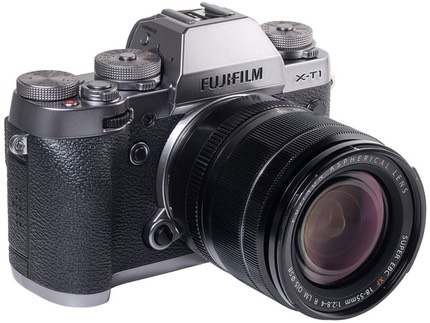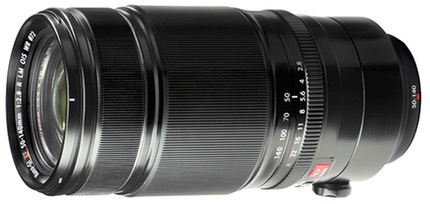Fujifilm today announced items that had been already disclosed through leaks, though additional details are now available.

First up is the US$1400 X-T1 Graphite Silver camera. This is an X-T1 that features a new silver “panda” type cladding, achieved by using a multi-layer coating approach. More interestingly, the new model has ten new functions or changes to functions not currently in the X-T1 (though these will be in a December firmware update for the original X-T1 model). Included in these changes are many that were some that responded to strong user requests. For example: direct autofocus area selection, Q menu customization, manual exposure control in video, and spot metering that follows focus.In addition, 24, 25, and 50 fps are now available as video frame rates. There are three functional changes in the new version of the X-T1, as well: 1/32000 second electronic shutter speed; the ability to change the live view to a “natural,” non-processed view; and a new Class Chrome film simulation. The new Graphite Silver body will be available in late November.

Two “new” lenses also were announced, the most significant being the 50-140mm f/2.8 R LM OIS WR (above). This weather resistant, fast telephoto zoom, while expensive at US$1600, fills a clear need for more and better telephoto choices in the XF system. Some are already complaining that this is a big, heavy lens, but that’s what fast telephoto zooms are: big and heavy (relative to the sensor crop size). One of the things keeping the X-T1 from really winning over some DSLR users has been the poor telephoto options, so I believe that pretty much any new telephoto lens is welcome for the XF mount. Given the X’s penchant for fast lenses and low light work, this lens is right in the wheelhouse of what’s needed, size notwithstanding.

Meanwhile we get another version of the 56mm f/1.2 lens, this time with APD (apodization filter). Yep, a new word, apodization. Basically this lens adds a gradient filter to the lens design. One of the goals of that filter is to remove the so-called onion rings that sometimes show up in out-of-focus highlights. The downside to the new lens is that it can’t use phase detect autofocus, because the filter is changing the data the PD circuitry gets; it can still use contrast detect autofocus, though. So basically, to get better bokeh, you pay US$500 extra and get worse focus performance. I can pass on that. The original 56mm f/1.2 isn’t particularly bad in its bokeh to start with, though, yes, there tends to be a clear ring at the outer edge of OOF highlights.
Support this site by purchasing from this advertiser:


